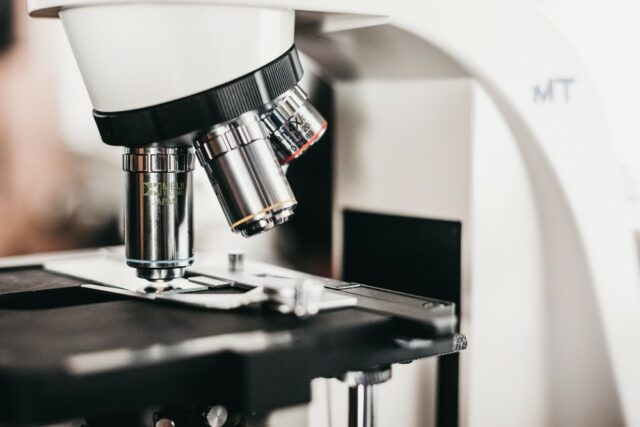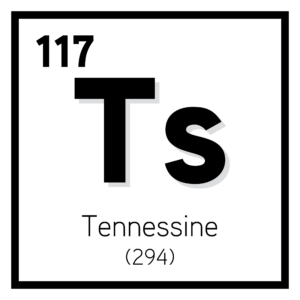At an age when most kids watched cartoons, young Clarice Phelps preferred “Beakman’s World”—a children’s series starring a zany scientist who answers viewers’ STEM-related questions. The show inspired her life ambitions and maybe some dubious home experiments.
“I loved trying to tinker with the VCR and mixing up random liquids in the kitchen. Dangerous, I know—it was a different time,” adds Phelps.
Today, Phelps is a researcher at the Oak Ridge National Laboratory (ORNL), where she played an integral role in a career-defining accomplishment: the discovery of a new element on the periodic table—Tennessine.
Blazing a path through STEM
It was clear that Phelps, who was raised in Tennessee, had an affinity for STEM topics early in life.

“There was a microscope slide set we had that was purchased from a yard sale. It had a bunch of broken slides in it, but I loved looking at all of the things I couldn’t see with my naked eye,” muses Phelps. “Also, we had a set of encyclopedias that I loved looking through for all of the color pictures and a special set of kids encyclopedias that had little science experiments in them. I think I did them all.”
That fascination with experimentation and discovery propelled her through her formative years. “In the sixth grade, I thought I wanted to be an astronaut or a cardiologist after we got to dissect a sheep heart,” adds Phelps. She found motivation through middle and high school science teachers who made science fun, engaging and relevant. They also encouraged Phelps to do her best and not settle for mediocrity.
She was also inspired by role models outside the classroom, even hanging a poster of Mae Jemison—the first African American female astronaut—in her bedroom. “I saw her as fearless and inspirational because she was the first and so smart. I wanted to do something great with my life like her,” says Phelps.
Facing adversity
Phelps’s path wasn’t without difficulties, especially as a woman and an underrepresented minority in STEM.
“People assumed that I had no education and tried to convince me to choose a less challenging career and educational path. The microaggressions. The macroaggressions,” says Phelps. “Learning to assert myself without being seen as the angry Black woman. Not being allowed to be angry for the same reason. Code-switching. Wearing my natural hair. Always being the only one in the room. It wasn’t until last year that I was able to work with another Black woman in this field in over 18 years.”
People assumed that I had no education and tried to convince me to choose a less challenging career and educational path.
—Clarice Phelps, chemist
After graduating with a Bachelor of Science in Chemistry from Tennessee State University and working as an engineering laboratory technician for the U.S. Navy’s nuclear power program, she asked a colleague for a letter of recommendation to accompany her graduate school application. She was told by that colleague that she needed to have a degree in order to apply for graduate school.
“I didn’t feel discouraged. I felt angry that this woman assumed that I did not have a degree at all.”
Discovering a new element

Eventually, her path would lead her to ORNL, where she became the first Black woman involved in the discovery of an element on the periodic table—Tennessine (Ts)—on April 5, 2010. Two hundred years ago, elements were found on an almost annual basis. But with a considerably full periodic table, the opportunity for that to happen is much more difficult and rare.
The discovery or creation of a new element gives scientists a better understanding of how nuclei work, which can eventually result in the development of safer nuclear reactors, among other practical applications. As a radiochemical technician, her team was tasked with the purification of Bk-249 (an isotope of the element berkelium), which was used as a target for calcium beam bombardment. After a year of targeting Bk-249 with the calcium beam, about six atoms of Z=1117 (Ts) were identified.
“It was a pretty amazing moment when our team found out,” says Phelps. “I remember being called in by my mentor at the time, Rose Boll, who told me that the material we purified, along with Shelley VanCleve, had been used to confirm the discovery of element 117!”
The discovery led to an invitation to do TedX Nashville, where she debuted “How I claimed a seat at the periodic table.” The presentation, which addresses educational elitism and how it disregards years of experience for those who do not hold advanced degrees, resonated with women—”especially women of color,” adds Phelps.
Looking ahead
As for what’s next, Phelps—who’s most proud of the family she’s built with her husband and three children—is working on finishing her Ph.D.
She’s also focused on researching actinide separations using spectrophotometry and electrodeposition as tools at ORNL. Phelps believes that the areas of research she’s involved in will help create novel ways to purify isotopes—something that could have far-reaching effects on things like the waste management of radioisotopes and finding target materials for new element discovery.
Your drive to succeed and to see your dreams come to life cannot be deterred by anyone or anything. Have confidence in yourself when no one else does.
—Clarice Phelps, chemist
But she also wants to continue exposing young minds to careers in STEM and encouraging opportunities for minorities. Her work on the board of Yo-STEM Knoxville, a 501(c)(3) non-profit that empowers underserved students through hands-on STEM experiences, is working to further that goal.
Her advice for young women looking to pursue a career in a STEM field?
“Never settle for anything less than your dream. Your drive to succeed and to see your dreams come to life cannot be deterred by anyone or anything. Have confidence in yourself when no one else does; people will be attracted to it. And after a while, they will have no choice but to pay attention to you.”
Lead image of Clarice Phelps courtesy of Carlos Jones/Oak Ridge National Lab

